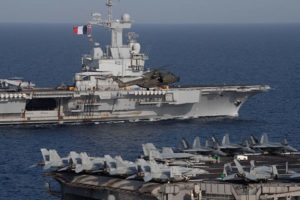
This week the U.S. Navy finished three international naval exercises with allies and partners in the 5th Fleet and 7th Fleet area of operations. On Thursday, the U.S. Navy, United Kingdom Royal Navy, and France Marine Nationale finished the Artemis Trident 19 5th Fleet mine countermeasures exercise in the Persian Gulf. The defense exercise used the scenario of providing safe passage for humanitarian relief vessels sailing through a mined area. “Mines threaten maritime traffic indiscriminately. Training together ensures we can…

 By
By 











